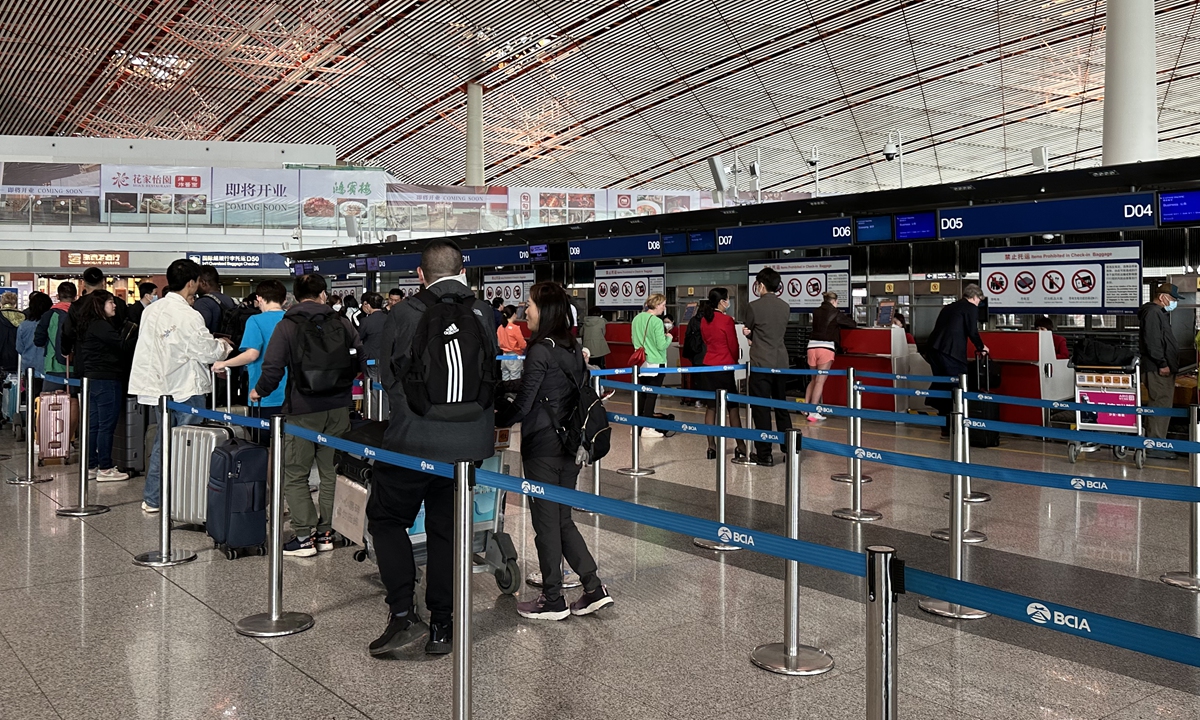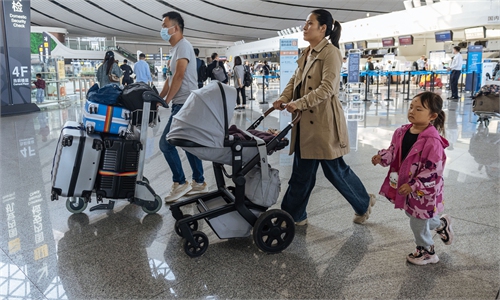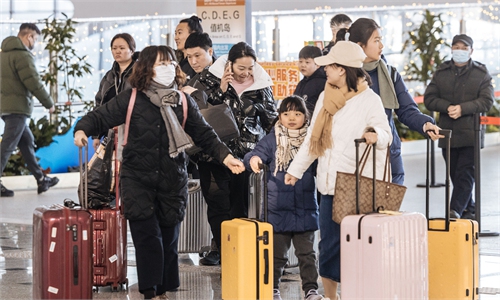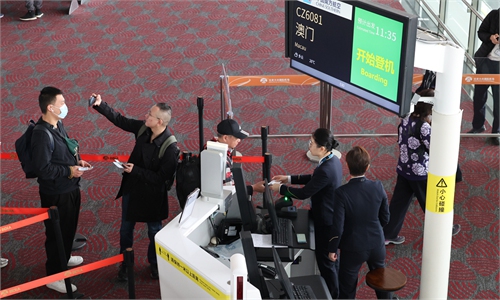Beijing Daxing International Airport welcomes 5th anniversary of operation, Chinese cities strive to become world-class transport hubs
Part of China’s drive to foster world-class transport hubs by 2050

Passengers attend a celebration held by the Beijing Daxing International Airport on September 25, 2024, as the airport celebrates its fifth anniversary of operation. Photo: Courtesy of Beijing Daxing International Airport
Beijing Daxing International Airport, the second international airport in the Chinese capital, celebrated its fifth anniversary of operation on Wednesday, as China plans to establish a group of world-class aviation enterprises and hubs by 2050.
The airport has hosted 65 Chinese and foreign airlines, served more than 127 million passengers and had more than 980,000 flight movements during the past five years, data from the airport showed.
Carriers using the airport have 216 passenger routes, covering 197 destinations in 25 countries and regions. There are 43 international and regional destinations, and the cumulative number of international and regional passengers has exceeded 3.1 million.

Passengers line up in the Beijing Capital International Airport on April 26, 2023. Photo: Tu Lei/GT
During this year's summer travel season, the airport witnessed the single-day passenger volume of nearly 180,000 passengers, the highest since it began operating.
Take China Southern Airlines as an example. The Guangdong-based airline is increasing the routes in Beijing, and it has resumed and opened 17 overseas routes since 2023.
It is quite impressive for the airport to show such a performance, Li Yuan, an independent market watcher, told the Global Times on Wednesday.
The airport adopted a comprehensive transportation planning concept from the start, as introducing fast rail and high-speed rail, and designing a terminal that is conducive to connecting flights, boosted passenger throughput, Li said.
The airport is committed to building the world's most popular world-class hub airport, Wang Yaqi, head of the aviation business department of Beijing Daxing International Airport, told the Global Times on Wednesday.
The number of international passengers has increased rapidly and the number of cities connected has gradually increased since the resumption of international routes on January 17, 2023.
"We will focus on the development of the international route network, mainly on the European and North American routes," Wang added.
The Daxing airport has made Beijing another city in China to have two airports. The number of passenger trips at the Beijing Capital International Airport (BCIA) is also rising fast.
Passenger throughput at BCIA this year is expected to exceed 50 million, up more than 30 percent year-on-year, Si Rong, a deputy head of the aviation business department of BCIA, said at an industry forum held in Beijing on Tuesday.
Our international passenger throughput this year surpassed 10 million in early September, and the overall growth rate exceeded 100 percent year-on-year. It is expected that the aviation market will continue to recover in the upcoming winter/spring season as carriers using the airport add routes, Si said.
The fast expansion route of airports in Beijing is in line with a plan by the Civil Aviation Administration of China, which has set a target of establishing a group of world-class aviation enterprises and hubs by 2050.
The number of airports with annual passenger volume of 10 million increased from 21 in 2012 to 39 before the pandemic. The global passenger throughput ranking of BCIA is second, with ninth for Shanghai Pudong International Airport and 11th for Guangzhou Baiyun International Airport.
Beijing and Shanghai rank among the top 10 cities in the world with annual passenger throughput exceeding 100 million.
The CAAC said it will further strengthen the intercontinental connection capabilities and global radiation capabilities of the three major hub airports in Beijing, Shanghai and Guangzhou, and create an all-round, gateway international aviation hub.
"I believe that Daxing airport still has great potential and will achieve an annual passenger volume of 70-80 million in the near future, with an annual passenger volume of more than 150 million in the city including BCIA," Li said.




